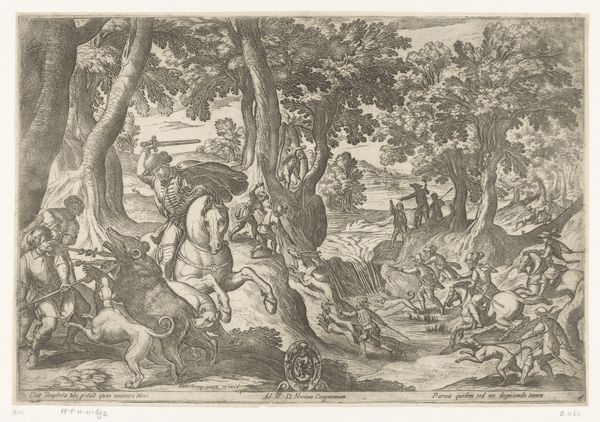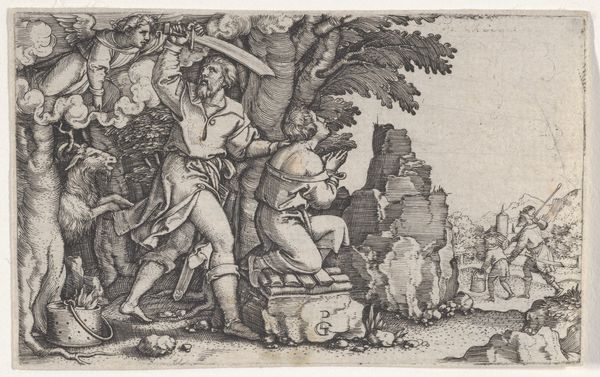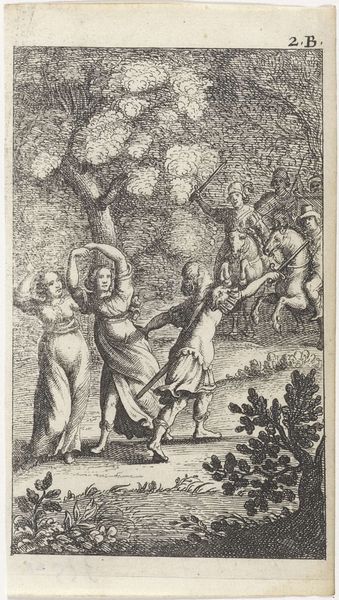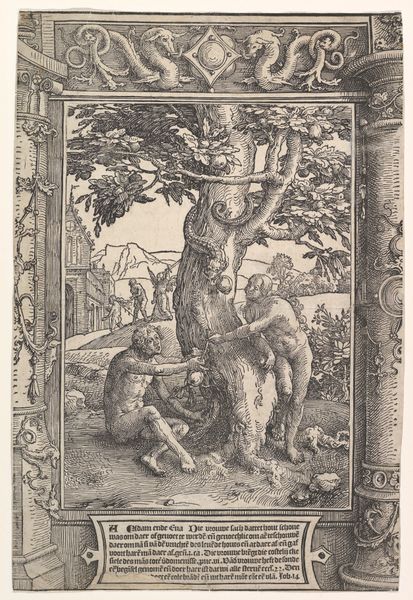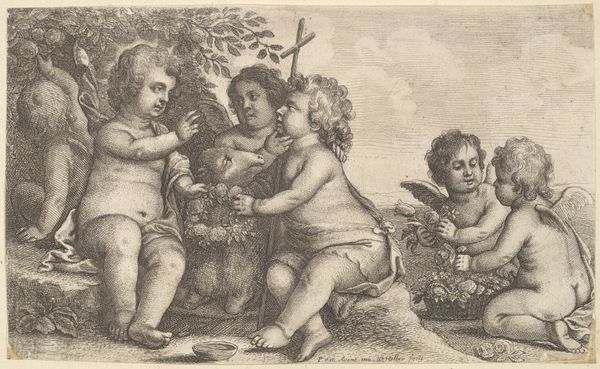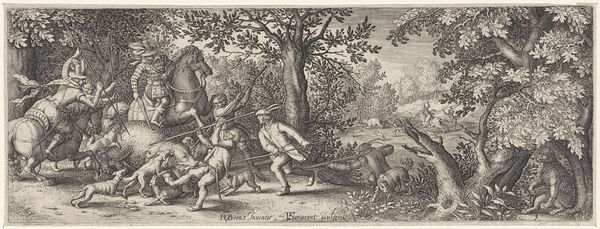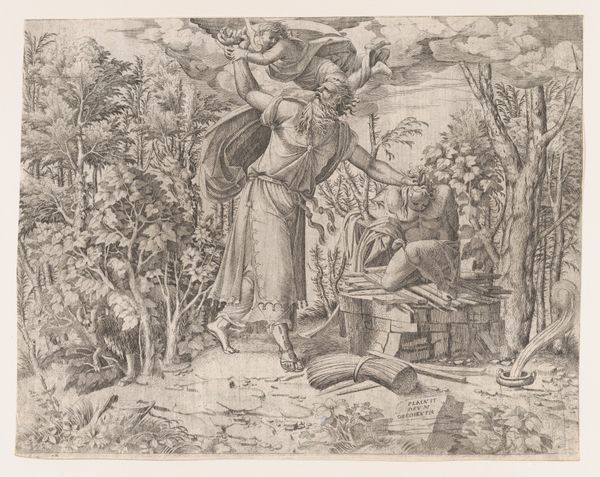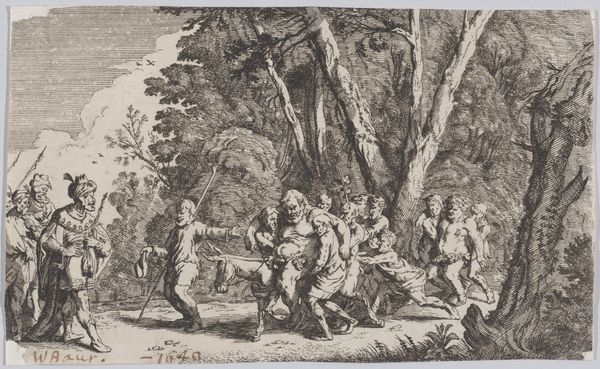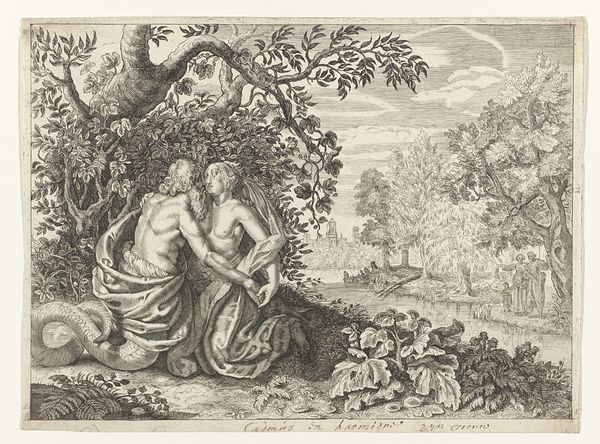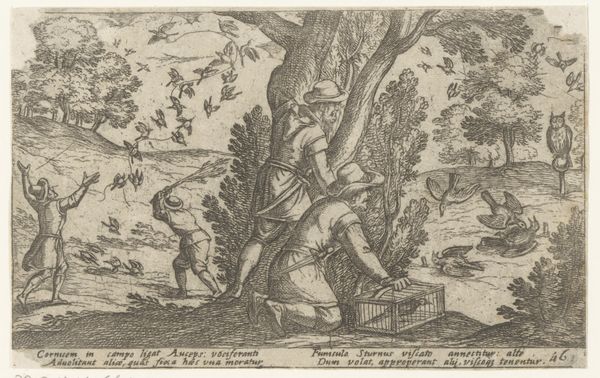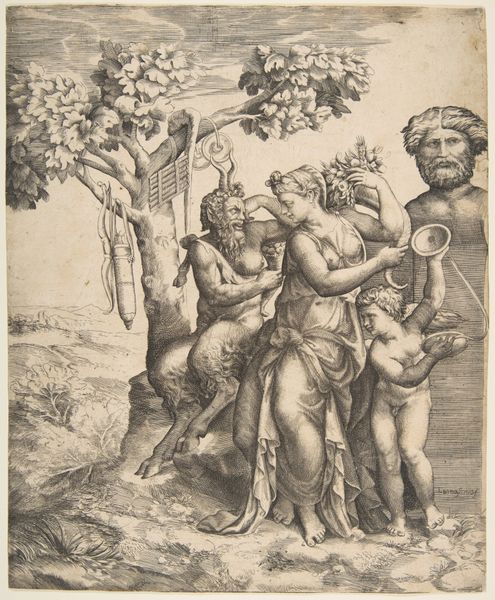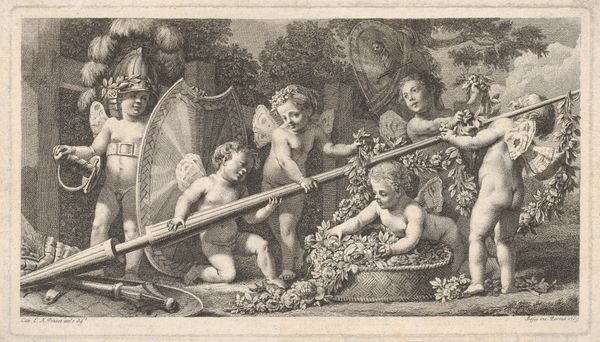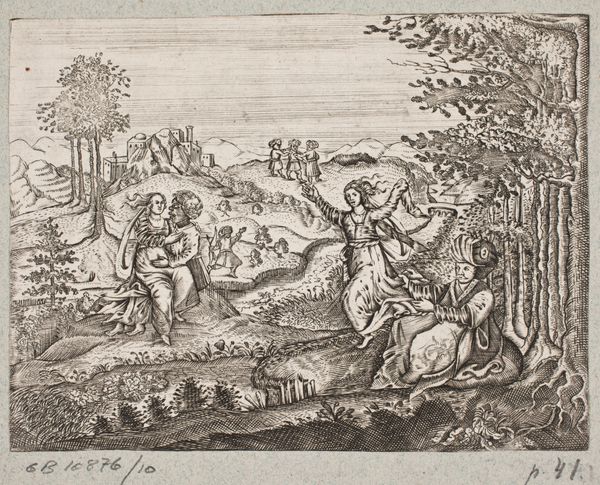
drawing, print, etching, engraving
#
drawing
#
allegory
#
pen drawing
# print
#
etching
#
landscape
#
engraving
Copyright: Public Domain
Editor: This is "Earth," an engraving by Wenceslaus Hollar from the mid-1640s, currently residing at the Met. I'm really struck by the level of detail Hollar achieved using just lines and shading in this print. The landscape in the background feels so expansive compared to the cherubic figures in the foreground. How do you see the artistic and cultural meaning of the work relating to the conditions under which Hollar created this engraving? Curator: What I see immediately is Hollar engaging with the social and material implications of representing "Earth" at a specific historical juncture. Think about the production: he meticulously etched lines onto a metal plate. The work becomes less about romanticizing nature and more about the manual labor, the artist as craftsman meticulously producing a commodity. Note the stark contrast between the idyllic rural background and the more immediate rendering of the figures with precise tools, pointing to the modes of production and consumption tied to that era. Editor: That's a perspective I hadn't considered, particularly highlighting it as manual labor rather than inspiration. Does this reframing then suggest a critique of, or at least a commentary on, the prevailing views of "nature" or even the commodification of it? Curator: Precisely! The abundance depicted – the overflowing cornucopia, the fruit-laden tree – it's not just a celebration. It speaks to the societal pressures, expectations of productivity, and resource management shaping 17th-century life. Also, it can highlight global explorations, extractions, and even consumption of natural goods that sustained European economies during the era, as well as being "imported" back to the West via trade or imperial routes and converted into artworks, what do you make of this angle? Editor: This is giving me a lot to reflect on. Thank you, I did not consider the role of labor and consumption being directly intertwined with an artist’s interpretation. Curator: Indeed, hopefully you can carry forward with how different interpretations emerge with considering historical material and methods.
Comments
No comments
Be the first to comment and join the conversation on the ultimate creative platform.
